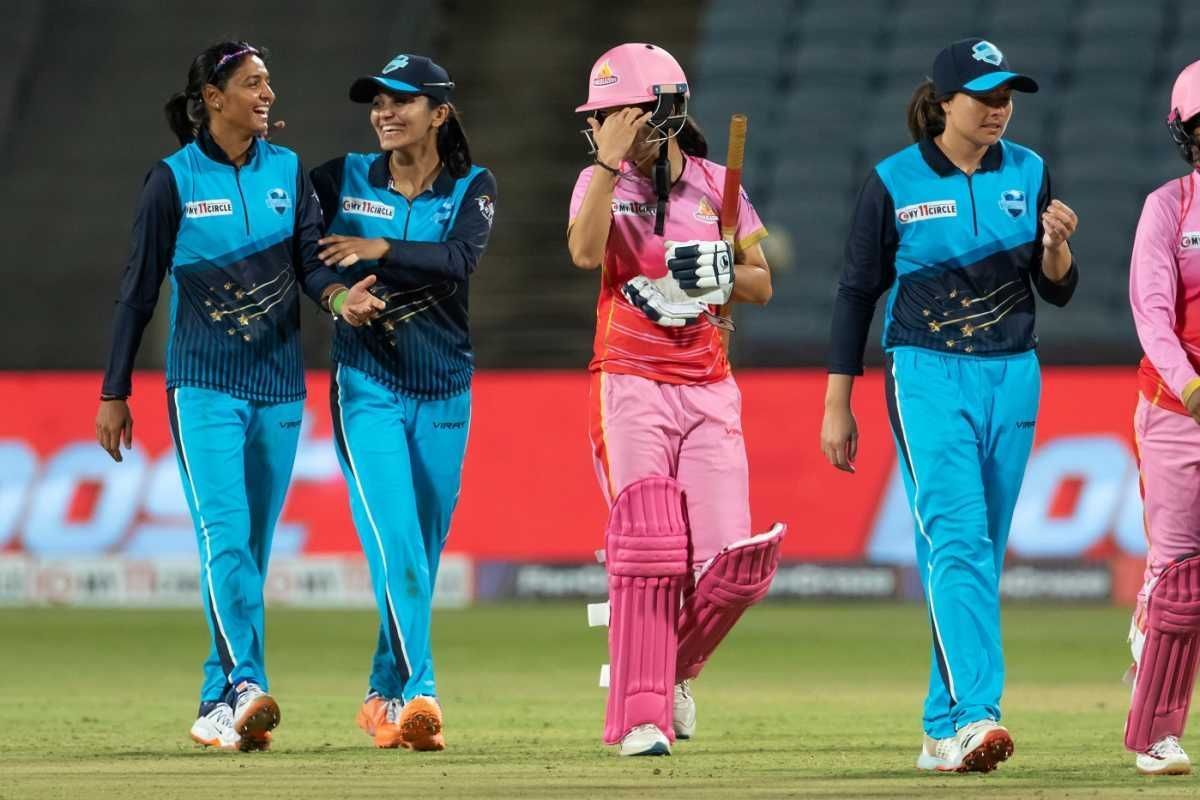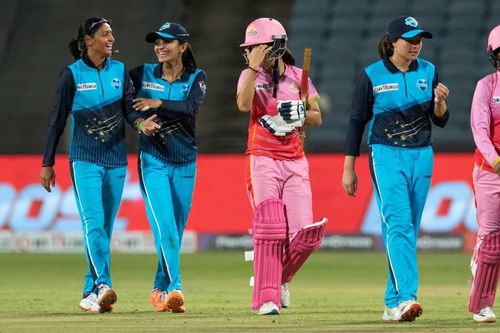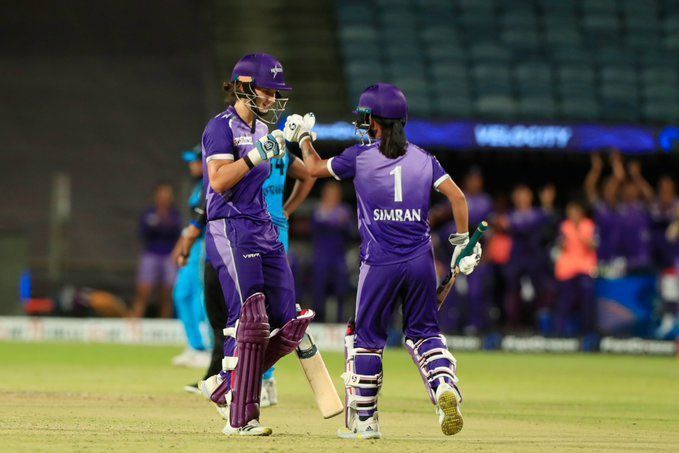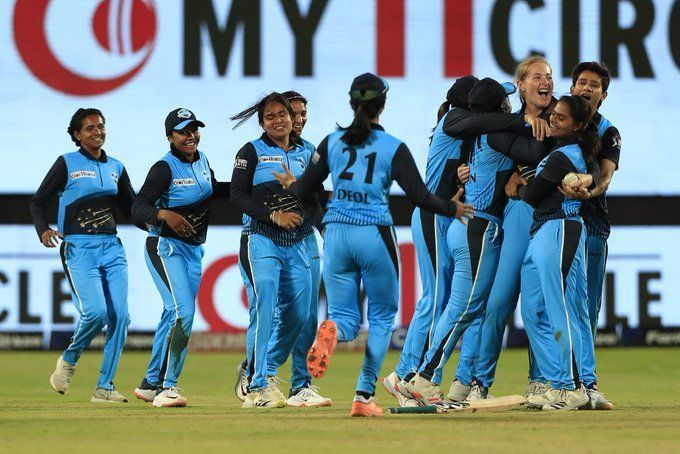
The time for Indian women's cricket team's white-ball revolution is now

You are in Pune. You have never watched a game of cricket live at the stadium. You have heard about the Indian Premier League (IPL) and have kept yourself up to date with whatever is happening. Some of your friends have told you that a few games are slated to unfold at the Maharashtra Cricket Association Stadium in Pune.
So, when almost all roads lead towards the MCA Stadium on 28th May 2022, you start feeling that the IPL caravan has returned to town. There is a buzz. There is excitement. There are frantic chats among supporters – chats around who they think is going to be the most impactful cricketer on the park.
When a friend asks if you are interested in going to the venue, you snatch his hand off. The chance to watch your favourite stars live, and the opportunity to just soak in the atmosphere and try to understand why cricket is as big as it is in India. It’s just too much to disregard.
As you get closer to the ground, though, your friend informs you that the IPL final between the Gujarat Titans and the Rajasthan Royals is on Sunday, and that it is taking place at the Narendra Modi Stadium in Ahmedabad. He also tells you that the game you are going to watch is the final of the Women’s T20 Challenge – a tournament that has quite often and quite heartbreakingly been an afterthought in Indian cricket.
At that very instance, however, your excitement drops. You start questioning why you are wasting time travelling to watch a women’s game. You even think if it’d be better if you got off, returned home and did something productive. As soon as you enter the stadium, though, all of those thoughts slip into the periphery.
The electric atmosphere. The craze of top-drawer cricketers plying their trade. The feeling of something truly special unfolding. All of it encompasses you. It’s not the IPL per se but it is pretty darn good. It is just as enthralling as the IPL.
The game delivers too, ebbing and flowing until both teams have nothing but air to gasp for. There are excellent batting displays. There are wonderful bowling performances. There are a couple of special catches too. But most importantly, there is a feeling that this should happen more often. And, that it should happen, irrespective of what is going on in the world and in the men’s game.
So far, that has, rather unfortunately, not been the pattern India has been following. The Indian women's cricket team plays significantly lesser games than its male counterparts and whenever it does, they just aren’t being rewarded enough. A women’s IPL (or lack thereof) is the perfect case in point, considering India, despite its riches, still does not have a decent league where female cricketers can showcase their talents.
This year, a few different murmurs have emanated. There have been rumblings that a WIPL is not too far away and that it will, in all likelihood, go ahead next year. But here’s the catch. These things have been said long enough for people to take it with a pinch of salt.
The Indian women's cricket team endured an indifferent Women's World Cup campaign
A few months ago, the Indian women's cricket team suffered at the Women’s World Cup because they weren’t brave enough. Their pattern of play was woefully exposed as the likes of Australia, England, New Zealand and South Africa trampled them.
But the Women’s T20 Challenge in 2022 has shown that the Indian women's cricket team can emerge from that slump. Jemimah Rodrigues, S Meghana and Shafali Verma didn’t feature much at the Women’s World Cup. While Shafali played a few games, Jemimah and Meghana weren’t selected altogether.
Each, over the years, has been inconsistent. But each can win games of cricket. But the Indian women's cricket team opted for something more calculative than creative – a philosophy that possibly no other top women’s team follows.
This season, they have shown they have what it takes to impact matches. There has been the odd shot that has left people scratching their heads. When it has come to pass, however, it has left a lasting impression – the sort of impression that makes you ask why they aren’t playing for the Indian women's cricket team often enough.
The aforementioned troika have plenty of cricket left in them too. Shafali is still a teenager. Jemimah is 21 years old and Meghana will only turn 26 in June. Smriti Mandhana is 25 years old and Richa Ghosh – another belligerent but inconsistent batter, is 18 years old. Harmanpreet Kaur, who is on the wrong side of 30 (33) has a lot to offer as well. Oh, and if Kiran Navigire finds her feet in international cricket, she could become a global superstar.
The common thread between each of them is that they like to dominate. Each of them has the talent to do it, and the strokes to stamp their authority frequently. But for some reason or the other, the Indian women's cricket team has opted for the cautious route in recent times, even when something more cavalier would’ve sufficed, meaning that these girls haven’t had the freedom to just be themselves.
The Indian women's cricket team's fast bowling battery is also a concern. However, if the WIPL does come to fruition, it will foster a culture of seam-bowling and tell young girls in big cities and small towns that this gig could fiscally and reputationally, take care of their futures.
From that standpoint, this Women’s T20 Challenge has come at the best possible time for the Indian women's cricket team. Not only has it given them a proper stage to express themselves, it has told these Indian women's cricket team members that they can stand toe-to-toe with some of the sport’s elite athletes. And come out on top.
In New Zealand, there was a sense of trepidation whenever the Indian women's cricket team faced a superior opponent. There was a feeling that they were hedging their bets, hoping that their rival would falter. This generation has no notions of that ilk. It will enter encounters wanting to dominate and while that will remain their natural instinct, it possibly needs a WIPL for them to realise that it is a sustainable approach.
That’s how neatly knitted these cash-rich competitions are with their respective national teams. The best cricketers in the world participate in the Women’s Big Bash League (WBBL) and that allows players who aren’t part of the national side to test their skills in a high-pressure environment. Australia, rather unsurprisingly, are the gold standard in women’s cricket. England, too, have invested heavily in The Hundred Women’s competition, and have reaped its rewards.
So, there is a clear link. It’s just that India has opted to remain oblivious to it. And guess what, the Indian women's cricket team hasn’t quite been able to maximise its potential. As soon as the big stage arrives, the Indian women's cricket team members, who don’t play as much top-level cricket elsewhere, experience a tinge of stage-fright, hence the dip in performances.
All that could change. Just by selecting a solution that is staring in the face. And by finally realising that a WIPL is the missing piece in the Indian women's cricket team jigsaw – a piece that would catapult the Indian women's cricket team from being also-rans to worthy contenders in every tournament they play.
At the moment, the Indian women's cricket team has packed up every bit of talent. They have handed over a platform ticket to each one of their cricketers and have told them that an unparalleled voyage awaits – a voyage that won’t just make them household names in cricketing conversations across India but also take the nation to where it rightly belongs.
But if the train of revolution doesn’t arrive altogether and doesn’t take them into promised land, things will feel broken. The next time anyone preaches how women’s cricket is going to change in the near future, people won’t believe it. The next time someone pledges that the Indian women's cricket team will regularly compete against Australia and England, it will be scoffed at.
And that, considering the talent in the country, would not feel right. Years ago, the potential of T20 cricket wasn’t realised until the IPL became what it is. Once that happened, it felt that that was always part of the ecosystem. It also directly impacted how the Indian men’s cricket team began approaching games of cricket.
The circumstances aren’t very dissimilar for the Indian women's cricket team in 2022. They have enough of a talent pool. And it seems that the country has more than enough infrastructure to accommodate it too. All it needs is a slight tweak in mindset – both on the field and off it, and someone actually brave enough to take that call.
The time for the Indian women's cricket team's white-ball revolution is now. If it does not materialize now, it might never materialize in the manner it deserves to. Anyone who says otherwise is either too ignorant to watch the sport, or simply does not believe that the Indian women's cricket team deserves a piece of the cricketing pie.
Unfortunately, that has been the dominant theme and the underlying thinking over the years. Not anymore. Not anymore.

